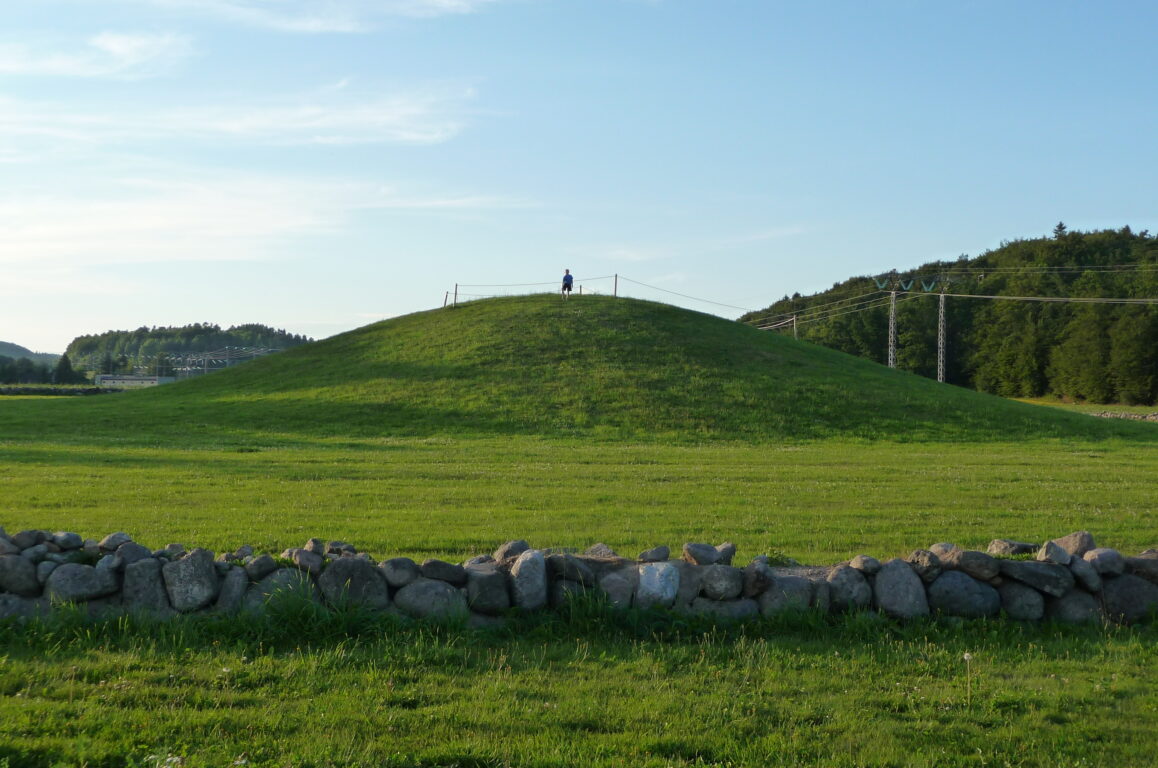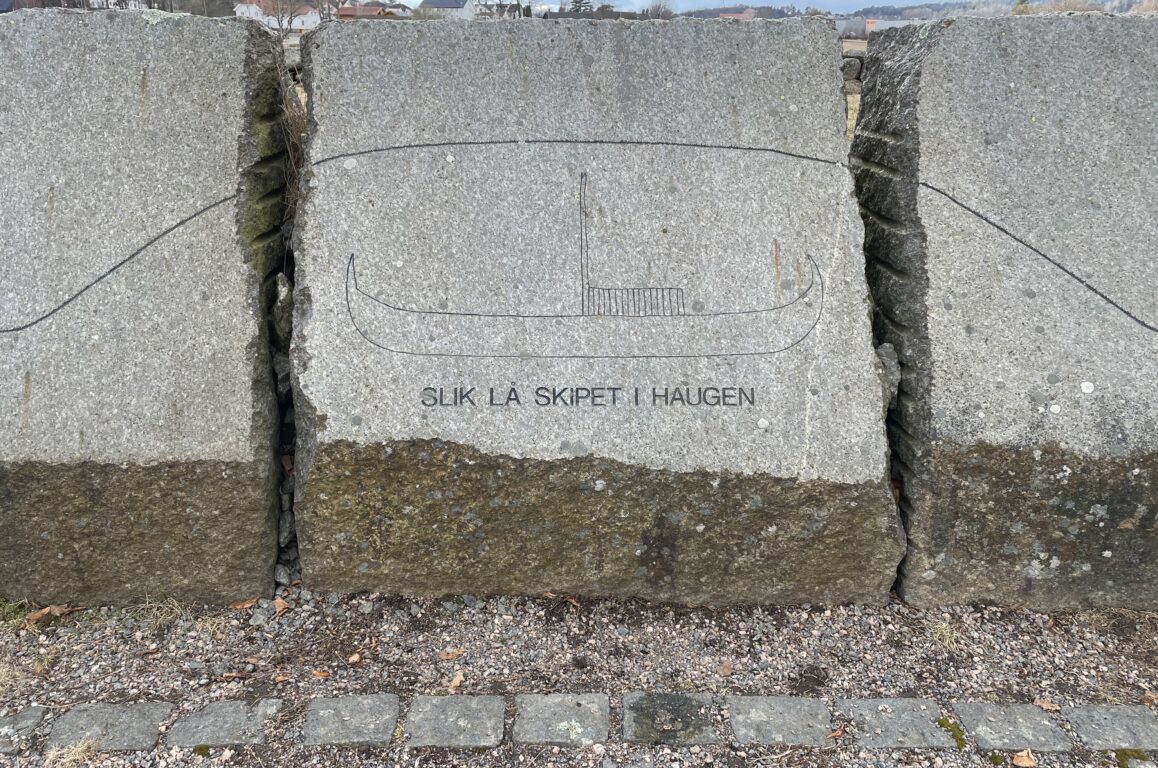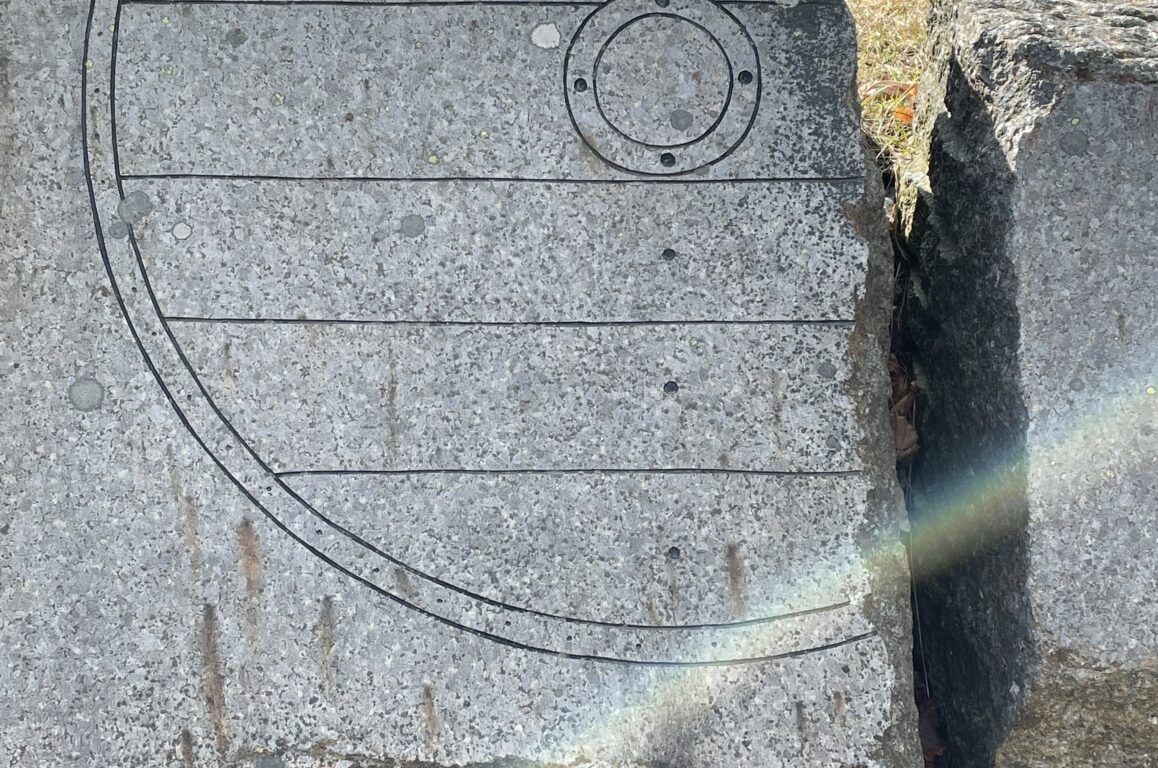Viking grave at Gokstadhaugen
The Gokstad find
The Gokstad find refers to the discovery of a large viking grave where the Gokstad ship was found . It was first discovered by two boys in 1879 and excavated in 1880 under the direction of Nicolay Nicolaysen.
Together with the Oseberg ship and the Tune ship, it is one of the world's three best-preserved Viking ships. All three are located in the Viking museum on Bygdøy in Oslo.
The Gokstad ship is the world's largest preserved Viking ship. A number of small bronze fittings for harness, decorated with Carolingian animal ornamentation, have played a major role in the debate over how old the ship is. Previously, it was assumed that it was from the middle of the 8th century, while more recent dendrochronological dating of timber from the burial chamber in the ship, shows that it was buried in the period 900–905.
The Gokstad ship
The Gokstad ship is very well preserved as the ship was buried in and filled with blue clay. It has been a fast sailing boat made for traveling on the sea. The ship is 24 meters long, 5 meters wide and 1.70 meters deep, and the displacement of the ship is 30 tonnes.
Store norske leksikon (2005-2007): Gokstadfunnet i Store norske leksikon på snl.no. Hentet 22. januar 2024 fra https://snl.no/Gokstadfunnet

Foto: Anna Runesson

Foto: Anna Runesson

Foto: Anna Runesson

Foto: Anna Runesson